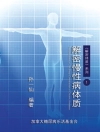Point-of-care testing devices for early detection, screening and diagnosis have been proven to significantly improve patient survival rates and quality of life, as well as to significantly reduce the cost and complexity of disease treatment. Providing a timely update on the current understanding of paper-based biosensors, this book aims to deal with the current state-of-the-art of paper-based biosensors technology and addresses its future prospects for the detection of infectious diseases, with particular relevance and applications for low-income and developing countries. This book focuses on the design and fabrication strategies of paper-based devices for the detection of various biomolecules in biomedicine. This comprehensive research and reference text would be suitable for researchers, scholars, and manufacturers in multiple disciplines, such as medical device design.
Key Features
- Highlights the fabrication of paper-based point-of-care devices for biomedical applications with a particular focus on low-income and developing countries
- Covers the approaches to design novel, cost-effective paper-based devices for disease diagnosis
- Includes information on tags/probes/label-based and label-free paper-based devices
- Discusses the integration of paper-based techniques and advanced diagnostics
- Contains actual case studies of the fabrication and utilisation of paper-based diagnostics in the field in each chapter
表中的内容
1 Paper-based biosensors: overview from past to future
2 Paper-based biosensor as an early diagnostic system in medical sciences
3 Fabrication of paper-based immunochromatography assay
4 Fabrication of surface-enhanced Raman scattering based lateral flow assay for disease diagnosis
5 Design and fabrication of tag/probe-based and label-free paper-based devices
6 Development of aptamer-based lateral flow assays
7 Paper-based diagnostics for SARS-Co V-2
8 Development of paper-based assay for detection of mi RNA in various diseases
9 PCR and other nucleic acid amplification technique based lateral flow assay for detection of the infectious agents
10 Plasmonic thermal based lateral flow assay for detection and quantification of antibody/antigen
11 State-of-the-art of paper-based technology and challenges in its commercialization
12 Sensing technologies used in microfluidic paper-based analytical devices (μPADs)
13 Integration of paper-based analytical tools with smartphones and IOMT
14 The futuristic paradigm shift in the field of biosensing applications
关于作者
Dr Nidhi Puranik is a faculty member within the Department of Biochemistry and Genetics at Barkatullah University in Bhopal, India. She has published over 30 articles and peer-reviewed journal articles pertaining to paper-based diagnostics. Her current research is focused on this technology with emphasis on early cancer diagnostics, with extensive in-field applications and instruction. She has been awarded the prestigious GATE, CSIR-NET, ICAR-NET, DRDO junior research fellowship, MPCST Young Scientist award, MPCST Young Scientist training fellowship and Young Investigator award.
Dr Arpana Parihar is a DST Women Scientist B at CSIR-Advanced Materials and Research Institute, in Bhopal, India. She has over eight years of experience in the field of cancer therapeutics and fabrication technologies (Micro/Nano-fabrication) for bio-devices/bio-medical POCT devices for the early diagnosis of cancer and infectious disease. She has been awarded prestigious GATE, CSIR-NET, DST-Wo S A, and Wo S B fellowships. She has published over 45 articles and three edited books with Elsevier, and written 21 book chapters in a number of published referenced works.
Dr Raju Khan, FRSC, is a Principal Scientist and Associate Professor at CSIR-AMPRI in Bhopal, India. He has more than 15 years of experience in electrochemistry exploring the electrochemical properties of nanostructures to design and develop efficient biosensor devices for healthcare monitoring. He has published 95 articles with high citation scores in several renowned scientific journals and has two patent files filled. He has shown workmanship by writing 35 book chapters with publishers such as Elsevier, Taylor & Francis, and IOP. He has shown proficiency by editing 20 books with various reputed publishers.












